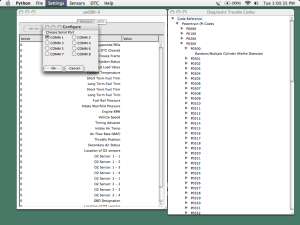Ruby is a dynamic, object-oriented programming language that has taken the programming world by storm. Created in the mid-1990s by Yukihiro “Matz” Matsumoto, Ruby has gained immense popularity among developers due to its simplicity, readability, and elegance. In this blog, we will explore why Ruby is such an attractive and interesting language.
First and foremost, Ruby is incredibly easy to learn. Its syntax is straightforward and intuitive, making it easy for beginners to pick up and understand. Its use of natural language-like syntax allows developers to write code that reads like English, making it easier to understand and maintain. This readability and simplicity also make it a great language for rapid prototyping and quick development cycles.
Another attractive aspect of Ruby is its community. Ruby has a vibrant and passionate community of developers who contribute to its growth and development. The community is known for its inclusivity and welcoming nature, making it a great place for beginners to learn and get involved. The community also creates and maintains many useful libraries and tools that make Ruby development even easier and more productive.
Ruby is also known for its flexibility. It allows developers to write code in multiple styles, from procedural to functional, giving them the freedom to choose the approach that works best for them. This flexibility also extends to its ability to integrate with other programming languages and frameworks. Ruby can be seamlessly integrated with other languages, such as Python, and frameworks such as Rails and Sinatra.
Speaking of frameworks, Ruby has one of the most popular web frameworks in the world – Ruby on Rails. Rails is an open-source web application framework that provides developers with a powerful set of tools and conventions for building web applications. Rails is known for its “Convention over Configuration” philosophy, which allows developers to focus on writing their application code rather than worrying about configuration details.
In conclusion, Ruby is an attractive and interesting programming language due to its simplicity, readability, elegance, vibrant community, flexibility, and powerful web frameworks. It’s no wonder that Ruby has gained so much popularity among developers in recent years. If you’re a beginner looking to learn programming, or a seasoned developer looking for a new language to explore, Ruby is definitely worth checking out.
Advantages
Sure, here are some advantages of the programming language Ruby:
- Simplicity and Readability: Ruby has a simple and intuitive syntax that makes it easy for developers to write and understand code. Its use of natural language-like syntax makes code more readable, which makes it easier to maintain and debug. This simplicity also makes Ruby an excellent language for rapid prototyping.
- Object-Oriented: Ruby is a pure object-oriented language, which means everything in Ruby is an object, even basic data types such as integers and strings. This makes it easy to write and maintain code because developers can reuse code and build modular programs.
- Dynamic Typing: Ruby is dynamically typed, which means developers don’t have to declare variable types. This makes Ruby code shorter and easier to write, as developers can focus on the logic of their programs rather than worrying about data types.
- Productive: Ruby is a highly productive language that allows developers to write code quickly and efficiently. It offers a range of tools and libraries that make development faster and easier, such as RubyGems, which is a package manager for Ruby libraries.
- Flexibility: Ruby is a flexible language that allows developers to write code in multiple styles, from procedural to functional. It also supports multiple programming paradigms, such as object-oriented and aspect-oriented programming.
- Rails Framework: Ruby on Rails is a popular web application framework that makes it easy to build web applications quickly and efficiently. Rails offers a range of tools and conventions that make development faster and easier, such as scaffolding, which generates code for common web application features.
- Community: Ruby has a vibrant and supportive community of developers who are always willing to help and share their knowledge. The community creates and maintains a range of tools and libraries that make Ruby development even more productive and efficient.
In summary, Ruby offers a range of advantages, including simplicity and readability, object-oriented programming, dynamic typing, productivity, flexibility, the Rails framework, and a supportive community. These advantages make Ruby an excellent choice for both beginners and experienced developers who want to build high-quality, efficient, and maintainable applications.
Disadvantages
As with any programming language, Ruby has its disadvantages. Here are some of the disadvantages of Ruby:
- Performance: Ruby is an interpreted language, which means that it can be slower than compiled languages like C or Java. While Ruby’s performance has improved over the years, it may not be the best choice for applications that require high performance.
- Memory usage: Ruby can use a lot of memory, especially when working with large data sets. This can be a disadvantage for applications that need to process a lot of data.
- Steep learning curve: While Ruby’s syntax is simple and intuitive, it can still have a steep learning curve for beginners. Ruby has many features and concepts to learn, and it can take some time to become proficient.
- Concurrency: Ruby’s concurrency model is not as advanced as other languages like Go or Erlang, which can be a disadvantage for applications that require high concurrency.
- Limited tooling: While Ruby has a vast collection of libraries and tools, it can be challenging to find the right tools for specific use cases. Ruby also lacks some advanced development tools like debuggers and code profiling tools.
- Version compatibility: Ruby has frequent updates, and it can be challenging to maintain code across different versions of the language.
In conclusion, Ruby has some disadvantages, such as performance, memory usage, a steep learning curve, limited tooling, concurrency, and version compatibility issues. However, these disadvantages may not be significant concerns for all applications, and the benefits of Ruby, such as simplicity, productivity, flexibility, and a supportive community, may outweigh the disadvantages. It’s essential to weigh the pros and cons of Ruby and choose the right language for your specific use case.









